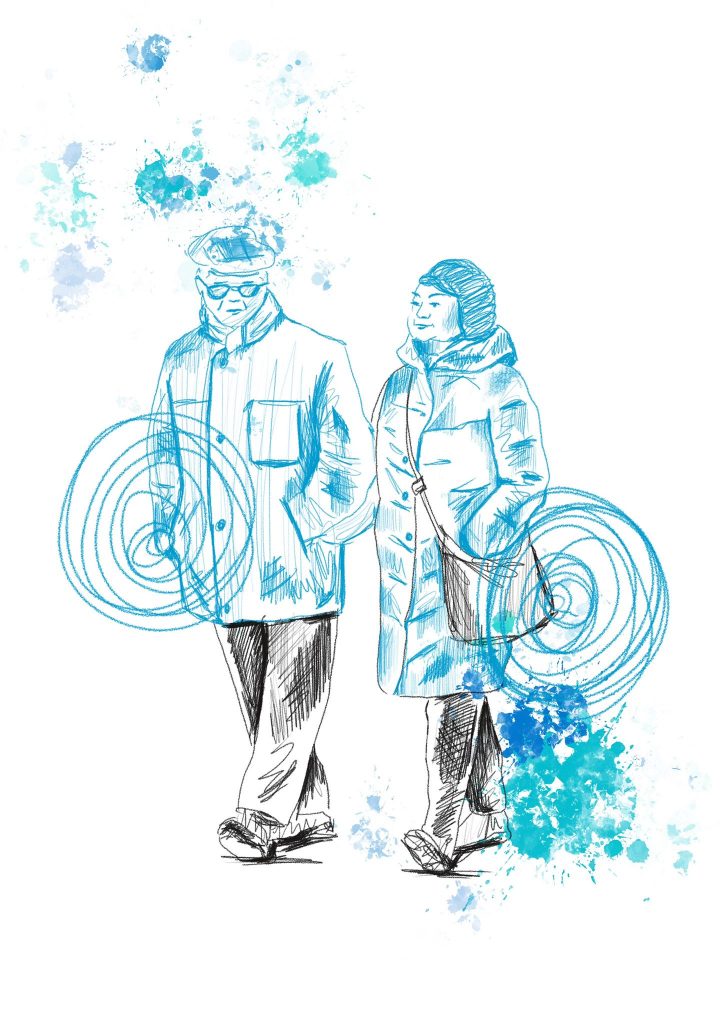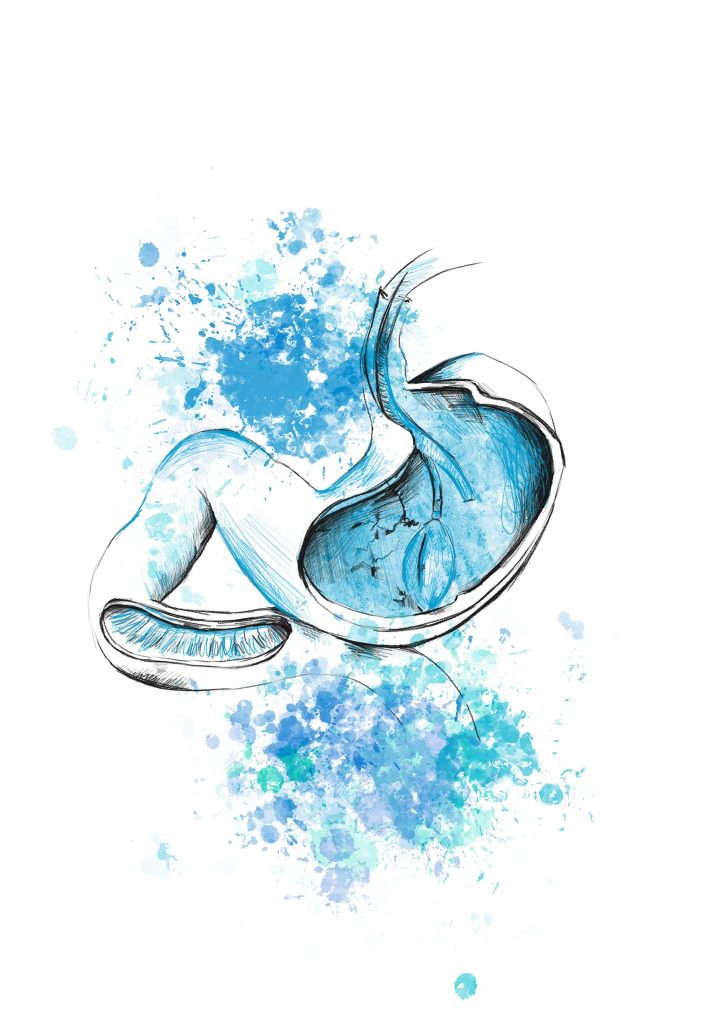Average life expectancy has been increasing (fortunately) over the years. We live longer than our grandparents did, and that is quite positive. But even so, the real numbers of this evolution may be surprising. According to the latest data (2019) from the World Health Organization, the population of western Europe lives on average 80 to 83 years – in a year in which the world’s record went to Japan, where the average life expectancy is 84 years. In 2000, people wouldn’t pass 79 in any country in the world, except in Japan, where the average was already 81. If we go back to 1950, the European citizens lived on average 62 years – which, to today’s standards, is clearly low.

Several factors contributed to the increase in average life expectancy over the centuries, especially the control of infectious diseases like cholera and smallpox, the consumption of drinking water, among other health reforms during the 18th century. These were followed by the development of vaccines and antibiotics, two major advances in medicine that allowed to improve our life span.
However, the fact that we live longer brings several challenges to healthy ageing. Living longer leads to a higher probability of contracting diseases and disabilities, and the best example of this is cancer, the incidence of which is directly associated with ageing. As one ages, the body begins to exhibit certain signs: the bones become more fragile, the muscles weaker, and the mind also goes through changes. The scientific community must keep doing what it has always done: to know more about ourselves and the world around us, to try to solve the problems that humanity faces nowadays.
Localised GPS walks
Patients with peripheral arterial disease find it hard to walk for longer periods of time. The arteries in their legs are partially clogged with atherosclerosis plaques that make it difficult for blood to circulate in the lower limbs. In one of the stages of peripheral arterial disease, patients suffer from intermittent claudication, a symptom that causes them to feel pain in the legs’ muscles after walking, forcing them to stop and rest. The cycle repeats itself, limiting the ability to walk for longer periods of time. In more advanced stages, the patients may experience numbness or very intense pain when lying down, sometimes strong enough to interrupt sleep.
“It’s a disease that prevents people from walking because it causes them pain. Although exercise is a medical advice, we know that there aren’t exercise plans specifically adapted to each patient. A sedentary lifestyle increases cardiovascular risk factors, aggravating the progression of peripheral arterial disease. In some cases, patients go to hospitals three times a week to exercise, which entails costs and has a considerable impact on their daily lives. Therefore, there are many patients who are not doing the physical exercise they would need”, said Hugo Paredes, a researcher at INESC TEC and professor at the University of Trás-os-Montes e Alto Douro (UTAD).
“We developed an intervention strategy focusing on the patient and supported by technology to stop the disease from progressing. We want to understand if patients comply with exercise plans using a virtual assistant, and if it works better than a plan in which the patient perform self-monitoring”, said Hugo Paredes.
There are 120 people with peripheral arterial disease followed by the Department of Angiology and Vascular Surgery of CHUPorto who have already benefited from the developments of the WalkingPad project – which aims to increase the distance walked without pain, promoting the patients’ willingness to physical exercise, namely walks. They used a smartphone with a mobile app that monitors their walks near their area of residence, as prescribed by their doctors. The application records a series of data including the speed and the route travelled, as well as the times they stopped because of the pain. This data is available to the patients and their physicians on a web platform, thus enabling a more reliable oversight of patients’ willingness to abide by their exercise plans.

In addition to demonstrate how effective the technology is to motivate patients to exercise, the project also aims to identify pain levels, notifying patients about when they should rest, preventing them from being forced to walk with extreme pain, which is also not beneficial for their health. But there’s more: the researchers can tell if it was the grandson, the neighbour, or anyone else doing the walking instead of the patients. “There is also an interesting aspect related to signal analysis. Through the walking pattern, we will be able to know if the patients did the exercise themselves, which brings us an advantage over pharmacological therapies, in which we are never sure if the patient took the medication or not”, added the researcher.
The intervention – which lasts six months, as it is the period necessary to verify effects on pain-free walking distance and quality of life, according to existing studies in this area – starts with the personalised prescription of physical exercise, i.e., walking for 30 minutes, in a place and time chosen by the patient – although the physical exercise plan is usually implemented at the participants’ residential or favourite areas. Study participants have three face-to-face contacts with the WalkingPad team, and they are clinically, physically and psychologically evaluated, with a face-to-face psychological assessment and intervention. The other contacts are made via telephone to monitor the physical and psychological state of the participants and acknowledge them for their efforts.
With a set of patients mostly over 60 years of age, the technological barrier was an unexpected challenge. “Some people just didn’t have cell phones of any kind. Several others had never used a touchscreen device, which required reinforcing the technical support to help people in this transition”, stated the researcher. In addition, there are other challenging issues, like the characteristics of this population – which features low levels of healthcare literacy and low education, among others.
Although it is still in a development phase, the project has already positively impacted the lives of several people. “Several patients asked the main researcher – Ivone Silva, a doctor at CHUPorto, if they could continue to use the application after the test period, showing how much it improved their experience throughout the study”, added Hugo Paredes.
Regarding the future, Hugo Paredes highlights two paths he would like to explore. “We wish to include this solution in primary healthcare in Portugal, also contributing to the literacy of the population about peripheral arterial disease. Moreover, we seek to extend the project at the European level, while evaluating the technology in large clinical trials, in collaboration with 3000 or 4000 patients”.
The WalkingPad project is an example, among many, of a technological solution developed by INESC TEC that actively promotes citizens’ health. In this case, it can help the healthcare professionals and the patients themselves to halt the progression of a disease that negatively influences patients’ quality of life and independence, particularly during the most advanced stages.
Artificial Intelligence endoscopies
The World Health Organization estimates that 9.6 million people died of cancer in 2018, highlighting the importance of an early diagnosis for a successful treatment of cancer. Stomach cancer is the third deadliest cancer in the world, and its incidence and mortality is expected to increase by 20% by 2035, mainly due to demography factors.
The diagnosis of stomach cancer can be performed following a suspicion stemming from several biomarkers, or as part of population screening campaigns. It is usually done through gastrointestinal endoscopies, complementary exams that have proven crucial to improve the survival rates of patients suffering from this type of cancer.
“When stomach cancer is detectable through endoscopy, it is usually at a reasonably advanced state, with tissue degradation reaching the stomach mucosa. This requires an early detection of lesions, and it’s one of the reasons why, despite not being among the most prevalent cancers, stomach cancer is among those with the highest death rate”, explained Miguel Coimbra, researcher and coordinator of TEC4HEALTH at INESC TEC.
The project CAGED focuses on the development of a decision-support tool to identify lesions in gastrointestinal endoscopies for the diagnosis of stomach cancer; it stems from a long multidisciplinary collaboration between INESC TEC and IPO Porto – the latter represented by the gastroenterologist doctor Mário Dinis Ribeiro.

“We want to create an initial prototype of a computer vision system for screening stomach cancer using images obtained through endoscopies, so healthcare professionals can automatically evaluate the quality of the exam and support the detection and characterisation of lesions observed”, said Miguel Coimbra.
The team aims to develop effective algorithms that can support endoscopy staff in the performance of said exams, not only allowing for second clinical opinions without the need for appointments with local experts or via telemedicine, but also increasing confidence that the exam has been fully and correctly performed. Since stomach cancer is only detectable at a relatively advanced stage, this would be a determining factor for earlier detection. “According to reference studies published in the literature, between 7% and 10% of the fatal victims of stomach cancer have previously undergone an endoscopy where lesions indicative of cancer would most likely already be detectable. Experienced professionals are very good at detecting the lesions, and if this did not happen, it is probably because they did not see them, and it is possible that they did not point the endoscopes to where said lesions were located. This is quite natural, given the difficulty of operating an endoscope and the visual similarity of the gastric mucosa”, mentioned the INESC TEC researcher. The quality of the exams is another key-aspect to the project, whose solution developed will be able to alert the physician to areas of the mucosa that have not been properly examined.
The evaluation of the quality of the exam may also be useful when subcontracting services, thus ensuring that the service provided by the external entity meets the required standards, but also when training younger doctors, with real-time feedback and a quantitative evaluation.
“We are currently collecting data at IPO Porto through a system that automatically gathers images to develop our algorithms. Later, we will develop two prototypes as a joint effort by both institutions, in which we will foster interactivity through sophisticated data visualisation methods. One of them will stay at INESC TEC for further development, and the other will be installed in an endoscopy room at IPO Porto”, stated Miguel Coimbra.
The CAGED project combines previous knowledge of other projects associated with the research and development of new algorithms and interactive systems for gastroenterology, with the latest advances in deep learning, with a clear impact on clinical practice in gastroenterology activities carried out in close collaboration with IPO Porto.
The aspiration of the human species to live longer is undeniable, and immortality is a common theme in several films and series, for example. The projections of the Pew Research Center indicate that the number of centenarians will octuple by 2050 – with estimates indicating that that 3.7 million people will celebrate their 100th anniversary at that ime. We may never be immortal like Deadpool, but maybe one day we’ll be able to recognise that scientists are the real heroes.
The researchers mentioned in the article are associated with UTAD and UP-FCUP




 News, current topics, curiosities and so much more about INESC TEC and its community!
News, current topics, curiosities and so much more about INESC TEC and its community!